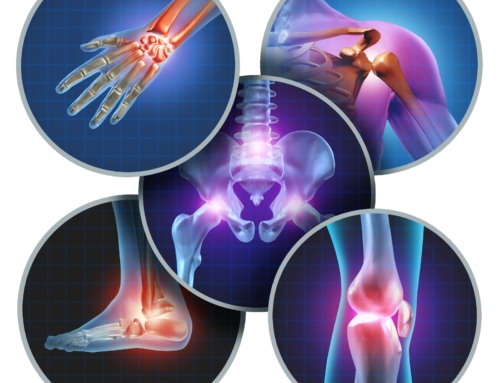Overuse or sport-related injuries to the shoulder can have devastating effects on your personal life if left untreated, causing pain and hindering your ability to complete daily tasks. While shoulder pain can be expected from time to time, it is important to have a doctor assess you if the pain persists or worsens. To help you decide if it is time to see a doctor, we have put together some information about shoulder anatomy, conditions and if surgery is required.
Anatomy of the Shoulder
Your shoulder is made up of three bones: the upper arm bone (humerus), the shoulder blade (scapula), and the collarbone (clavicle). The rounded top of your humerus bone fits into a socket called the glenoid. A web of muscles, tendons, and ligaments attach and surround the joint creating stability and movement functionality.
Common Shoulder Conditions
Suffering from common shoulder conditions can put you at a higher risk of needing surgery down the line. Overuse injuries are developed over time by over-working a specific muscle or joint without allowing proper rest in between periods of use. Frozen shoulder, thrower’s shoulder, SLAP tears and or a torn labrum and rotator cuff tears are among the top overuse injuries we encounter. Injuries that happen as a result of trauma or impact can also cause lasting pain in the shoulder that can affect your shoulder’s normal range of motion, causing everyday movement to become increasingly difficult.
When To See a Doctor
Doctors typically try to delay surgery in favor of less invasive treatments. Medical attention should be sought when nonsurgical alternatives no longer help alleviate pain. Pain can include but is not limited to loss of motion, aches after extensive use, joint stiffness after inactivity or rest. Your orthopedic surgeon may order additional testing to determine the appropriate treatment such as and MRI or MRI-Arthrogram. Once a definitive diagnosis is made and all treatments options are discussed and reviewed then should a decision of surgery or non-surgical management be made. Although surgery has been proven to increase productivity and use of an injured joint, non-surgical alternatives such as medicine or physical therapy can also help patients. Feel free to read up on some of our approaches to non-surgical treatment.
Treatment of Shoulder Pain
The treatment of shoulder pain depends entirely on the cause and severity of the problem. If home exercises, formalized physical therapy, medications and other treatments do not alleviate your pain, surgery may be required. Depending on your condition, different surgical procedures are available. A common surgical procedure to address shoulder pain and instability is a shoulder reconstruction procedure. During this procedure, small incisions are made around the shoulder joint to help the surgeon visualize the damage done. Torn or stretched ligaments and or muscles in the shoulder are repaired/reconstructed so that the joint is held properly in place. This type of surgery usually takes only 30 to 45 minutes, and recovery takes four to six months.
Shoulder Reconstruction Surgery in Illinois
Shoulder injuries can range from sprains and strains to tears and dislocations. If these injuries are left untreated, their severity can result in chronic pain and limited function, which is why it is very important to seek immediate medical assistance. Even if surgery is required, only an experienced orthopaedist will be able to determine exactly how to correct the issue. With over 25,000 arthroscopic knee and shoulder procedures under his belt, Dr. Roger Chams is a leading expert in the field of sports medicine and orthopedic surgery in Illinois. He offers treatment for all manner of shoulder injuries, as well as shoulder reconstruction procedures. To learn more about the services Dr. Chams and his team provide or to schedule an appointment, contact us at (847) 247-4000 today!






